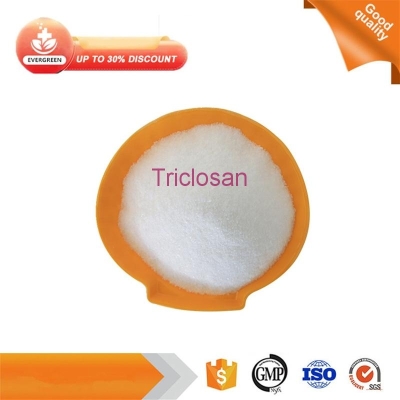-
Categories
-
Pharmaceutical Intermediates
-
Active Pharmaceutical Ingredients
-
Food Additives
- Industrial Coatings
- Agrochemicals
- Dyes and Pigments
- Surfactant
- Flavors and Fragrances
- Chemical Reagents
- Catalyst and Auxiliary
- Natural Products
- Inorganic Chemistry
-
Organic Chemistry
-
Biochemical Engineering
- Analytical Chemistry
- Cosmetic Ingredient
-
Pharmaceutical Intermediates
Promotion
ECHEMI Mall
Wholesale
Weekly Price
Exhibition
News
-
Trade Service
Introduction to gel acquisition is mainly through two mechanisms: the creation of a network structure (e.
g.
, gelatin) by a mesh of polymers, or the formation of a network structure (e.
g.
, yogurt) by aggregation or flocculation of particles
.
In the cosmetics industry, gels are often used to obtain different textures, and the microstructure before and after the same emulsion gel will be significantly different, such as Figure 1
.
For emulsion systems that floccinate gels, the interaction between droplets depends on factors such as
temperature, droplet size, salt concentration, and emulsion concentration.
Formulation developers need to know under what conditions the emulsion gels, whether the emulsions have a tendency to gel, the characteristics of the gel, the conditions and stability of the gel' presence, and so on
.
In this article, we present the effect
of several variables on emulsion gelatination.
Methods The phenomenon
of emulsion gelation stabilized at CMC concentration with SDS (sodium dodecyl sulfate) was studied.
The average droplet size is 1 μm
.
In the first experiment (a, b, c), we investigated the effect
of salt concentration on emulsion gelatination in the continuous phase.
The emulsion is deheated to 40 °C and then transferred to Turbiscan LAB
.
In the second experiment (d, e, f), we investigated the effect
of dispersed phase volume concentration on emulsion gelatination.
The initial emulsion is the same, which is heated to 60 °C
before being placed in turbiscan LAB.
Result 1.
Salt concentration Figure 2 shows the experimental results
of the effect of salt concentration on emulsion gel.
The emulsion is maintained at a temperature of 45 °C, and when the droplets begin to appear interactive adhesion flocculation, it is gradually cooled to room temperature and tested
using turbiscan Lab.
In short-period experiments, that is, when cooling from 45 °C to room temperature (from the initial moment of gelatinization to the cooling room temperature stage), we observed no significant change in the light intensity value of the unsaled emulsion (sample a), and the backscattered light intensity of the emulsion with 0.
38 M salt decreased uniformly at the overall height of the sample (figure 2
).
For sample b, this decline (20 min) was slow and mild (-0.
6%), but sample c, the descent was faster (10 min) and significant (-17%)
.
In long-period experiments (after cooling), there is no major change
in backscattered light except for a slight floating phenomenon.
Turbiscan data showed a significant change in particle size during the gel process, and it was certain that the gel of the emulsion was due to flocculation
.
When the salt concentration is low (b), the emulsion forms a small flocculation, corresponding to a slight decrease
in backscattered light.
As the salt concentration increases (c), flocculation between droplets becomes more intense, generating larger particle sizes and causing backscattered light intensity to decrease
dramatically.
2.
The volume concentration is shown in Figure 3, when the oil volume concentration = 1% (d), we observe the backscattered light intensity of the emulsion and any significant change
.
On the other hand, for emulsions e and f, the backscattered light intensity decreased significantly over a short period, but the degree of decline was not proportional to the volume concentration (Φ = 10% and 20% corresponded to -19% and -14%, respectively).
The decrease in light intensity corresponds to an increase
in the size of the emulsion droplets.
Turbiscan data show that as volume concentration increases, the degree of BS decline decreases, meaning that high concentration emulsions generate smaller
flocculation sizes.
In fact, this is also the case, as the concentration of the oil phase volume increases, the gel structure formed by the flocculant droplets becomes denser
.
Consistent with the expected experimental phenomenon, the gel also had dehydration shrinkage during long-term experiments
.
We showed the amount of dehydration shrinkage of emulsion gels at different concentrations
in Figure 4.
These curves show that only when the emulsion concentration is 30%, the gel will form a stable state, its dehydration contraction is completed after 1h, and other emulsions will float
up if they are not stable.
Conclusion Under the conditions of salt concentration and temperature, the droplets of the SDS emulsion system will floccinate each other to form a gel
.
When the oil phase volume concentration reaches 30%, a stable emulsion gel
can be formed.
Turbiscan can both qualitatively and quantitatively define the emulsion gel formation process and is ideal for characterizing and optimizing the formulation of these new materials
.
Formulaction Stability Analyzer Turbiscan AGS is designed for high-volume R&D and quality inspection departments
.
Combination
of TurbiScan Lab with a fully automatic robot.
The fully automatic robot consists of 3 independent thermostatic baths and a robotic arm
for sample handling.
There are 18 sample cells in each thermostatic bath, and a total of 54 samples can be stored for sequential measurement
.
The bath temperature is controlled from +5°C to 60°C room temperature, and the robot arm for sample delivery runs 60 times per hour for 7 days without interruption
.







